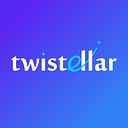Personalized Marketing Automation: Three Strategies and Examples
This article was originally published at Twistellar.com
Marketing teams do their best to create an engaging, powerful, and personalized experience for customers from their first visit to the website to making a purchase. And personalization is not an option anymore — it’s a necessity.
Since there are plenty of customer touchpoints, all your messages have to hit the target. And in order to communicate in a personalized and successful way, you need to answer the following questions:
- What do we know about the customer?
- What’s the right channel and the right message?
- How to send it at the right time without spending excessive time and human resources?
However paradoxical it may sound, automation can help you create a human-like personalized experience, and answer these questions.
It can help get insights into your customers’ needs with the help of AI-powered analytics and reporting.
It transforms each interaction into a personal, human-like dialogue with the help of personalized messages based on the analysis of the previous customer interactions, and it automates repetitive tasks, such as email & ad campaigns, content distribution, and social media planning.
As a result, marketing operations are more optimized, and conversion rates increase.
Of course, to make automation work, you need to have consistent data and a strategy in place. Each strategy is unique to each business, and if you want to discuss how automation can help with your particular case, make sure to contact our marketing consultants.
Today our main goal is to show you some actionable tactics that we’ve found effective across our projects of Marketing Cloud integration and customization.
We hope that you will be able to add this to your strategy as well. So let’s dive in.
1. Personalization Examples with Salesforce Marketing Cloud: Email
Scenario 1 — We want to send targeted personalized emails
Even though marketers can sigh sadly when they hear about email, nobody would argue with the fact that it’s still one of the most popular channels of communication. 80% of our marketing automation projects are connected to improving an email strategy.
The skepticism about it is usually connected with the fact that emails are typically boring, so they end up in spam and leave you without customers, which is the basic equivalent of an unsubscribe. So how can we draw their attention to our message?
If you ever read about personalized emails, it usually means inserting the recipient’s name or company name in the content. In Marketing Cloud, it’s known as “personalization strings” when you add any known subscribers’ attributes into the email content, preheader, or subject line. However commonplace, it is still very effective. But it’s just one first step, and there’s much more to come up with here.
If you imagine a typical relationship with someone, knowing someone’s name just makes you an acquaintance, one of many. However, if you are aware of someone’s interests and can offer something based on these interests, it means that you get along well. And here it’s good to mention another personalization feature that can help you build trust with your customer: dynamic content.
Dynamic Content
Dynamic content in email lets you build content blocks based on the pre-set rules that you define. It’s not limited by name. Here we talk about demographic attributes, such as age, location, or their previous preferences, purchase data, industry, etc.
The best thing here is that you build one email that gets adapted to your audience’s preferences. Just consider how much time and effort the team could save!
Imagine that you have an international e-commerce store and you want to send a personalized offer to your customer. You can choose the language of the email based on their location. You can also have different content blocks for similar products based on their previous purchases.
If you sell to individual clients and companies, you can adapt your offer as well. Another example is if you hold events in different countries, you’ll have to build just one email, but the content, including the title, place, and language of the event, will be set accordingly in the email.
2. Personalization Examples with Salesforce Marketing Cloud: Landing Pages
Scenario 2 — We want to have adaptive landing pages
Another thing we’ve found really effective to implement was Interaction Studio, aka Personalization. Think of all your customers’ possible touchpoints: website, mobile app, socials, email and ad campaigns, physical store, etc. Every interaction leaves you with important information that contributes to creating a full-fledged customer profile.
Let’s see some Personalization examples:
…
Read the full version at Twistellar.com
